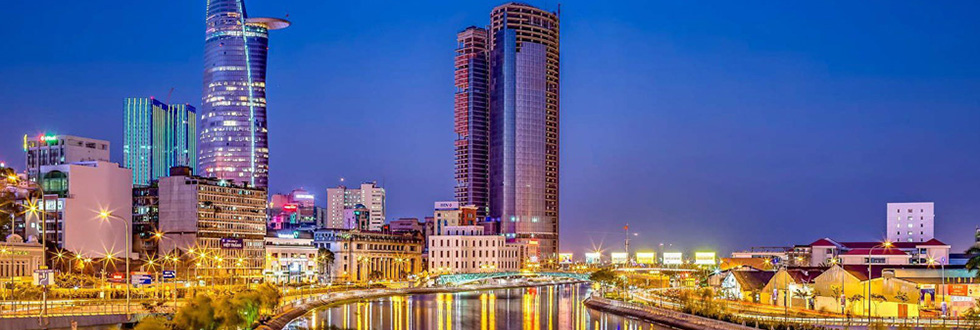DEVELOPMENT
VIETNAM
Population : 90.73 million 2014
GDP : $ 186.2 Billion 2014
GDP growth : 6.0% 2014
Inflation : 0.6% 2015
ECONOMY STAND
Vietnam's shift from a centrally planned to a market economy has Transformed the country from one of the poorest in the world Into a Lower middle-income country. Vietnam now is one of the most dynamic in East Asia Emerging Countries region.
OVERVIEW
Vietnam is a development success story. Political and economic reforms (Đổi Mới) launched in 1986 have transformed the country from one of the poorest in the world, with per capita income around US $100, to lower middle income status within a quarter of a century with per capita income of around US$2,100 by the end of 2015.
Vietnam’s per capita GDP growth since 1990 has been among the fastest in the world, averaging 5.5 percent a year since 1990, and 6.4 percent per year in the 2000s. Vietnam’s economy continued to strengthen in 2015, with estimated GDP growth rate of 6.7 percent for the whole year.
Social outcomes have improved dramatically across the board. Using the US$1.90 2011 PPP line, the fraction of people living in extreme poverty dropped from more than 50 percent in the early 1990s to 3 percent today. Concerns about poverty are now focused on the 15 percent of the population who are members of ethnic minority groups, but account for more than half the poor.
Not only are incomes higher, but the Vietnamese population is better educated and has a higher life expectancy than most countries with a similar per capita income. The maternal mortality ratio has dropped below the upper-middle-income country average, while under-five mortality rate has fallen by half, to a rate slightly above that average. Access to basic infrastructure has also improved substantially. Electricity is now available to almost all households, up from less than half in 1993. Access to clean water and modern sanitation has risen from less than 50 percent of all households to more than 75 percent.
Vietnam’s Socio-Economic Development Strategy (SEDS) 2011-2020 gives attention to structural reforms, environmental sustainability, social equity, and emerging issues of macroeconomic stability. It defines three "breakthrough areas": (i) promoting human resources/skills development (particularly skills for modern industry and innovation), (ii) improving market institutions, and (iii) infrastructure development.
In addition to the elaboration of three SEDS breakthrough areas, the five-year Socio-Economic Development Plan 2011-2015 focused on three critical restructuring areas – the banking sector, state-owned enterprises and public investment -- that are needed to achieve these objectives. The recent draft of the SEDP 2016-2020 acknowledges the slow progress of the reform priorities of the SEDP 2011-2015 and emphasizes the need to accelerate these reforms in 2016-2020 to achieve the targets set in the 10-year strategy.
Vietnam also faces an unfinished economic modernization and structural transformation agenda. Part of this relates to maximizing the gains from the ongoing structural transformations that have been a major contributor to growth since the early 2000s.
With agriculture still accounting for almost half the labor force, and with significantly lower labor productivity than in the industry and services sectors, future gains from structural transformation could be substantial. The transformation from state to private ownership of the economy is even less advanced. The state also wields too much influence in allocating land and capital, giving rise to heavy economy wide inefficiencies. So, adjusting the role of the state to support a competitive private sector–led market economy remains a major opportunity. This will be important for enhancing productivity growth which has been stagnating for a long time. Vietnam needs more rapid productivity growth to underpin sustained rapid growth in order to achieve its objective of reaching upper middle income status in the next few decades.
Vietnam has boosted its international economic integration as it enters into more free trade agreements with the Eurasian Economic Union, the European Union, South Korea and the Trans-Pacific Partnership. At the same time, the ASEAN Economic Community was established on December 31, 2015, and is likely to create more opportunities for the country to integrate into regional and global economies. But while global integration has advanced well, with Vietnam embedding itself in global value chains, the benefits are constrained by the absence of linkages with domestic firms.
Vietnam is preparing for a change in the country’s leadership, following the 12th Congress of the Vietnam Communist Party in January 2016, and with the upcoming General Elections in May 2016.
Vietnam Foreign Direct Investment Forecast 2016-2020
Foreign Direct Investment in Vietnam is expected to be 1440.45 USD Million by the end of this quarter, according to Trading Economics global macro models and analysts expectations. Looking forward, we estimate Foreign Direct Investment in Vietnam to stand at 3879.66 in 12 months time. In the long-term, the Vietnam Foreign Direct Investment is projected to trend around 9007.60 USD Million in 2020, according to our econometric models.
DEVELOPMENT CONTEXT
• 1986: Introduction of economic reform (Doi moi) transforming national economy from a centrally planned system into a market oriented one and open-door policy, gradually integrating it into world economy
• 1990: “10-Year Strategy for socio-economic Stabilization and Development” for period 1991-2000, took the “Doi moi” reform process much further and deeply, leading to significant changes and covering all sectors of the economy.
• 1996: Focus on promoting industrialization and modernization designed to reach industrialized status by 2020 and to prepare conditions for joining WTO.
• 2001: “10-Year Strategy for socio-economic development” for period 2001-2010.
DEVELOPMENT ACHIEVEMENT
- GDP Growth rate : 6.9% per annum (1996-2000); and 7.5% (2001-2005) – An industrial growth rate of 12.9% per annum raising the share of industry from 22.7% (1990) to 40.5% (2003) of GDP and reducing share of Agriculture from 38% to 21.7% accordingly.
- Sustained growth of 4.2% in agriculture, making Vietnam the second largest exporter of rice and third largest exporter of coffee in the world; Agricultural export constitutes 30% of the country’s export.
- Export growth: 16.2% per annum (2001-2005) – FDI shared 16.8% of total investment (2001-2005)
- Reduction of the rate of poverty (Vietnam's standard) from 30% of the total households in 1990 to 10% in 2000 and 7% in 2005
- The area covered by forest increases from 23% (beginning 1990s) to 34.5% (2001) and 37% (2004)
- Average GDP Growth: 7.6% per annum doubling the size of Vietnam’s economy between 1995-2001 Viet Nam’s GDP per capita has increased this decade, but remains low ( at US$ 440 per capita in 2002; estimated US$ 600 in 2005).
|
Forecast |
Actual |
Q2/16 |
Q3/16 |
Q4/16 |
Q1/17 |
2020 |
Unit |
|---|---|---|---|---|---|---|---|
|
Foreign Direct Investment |
2622 |
1440 |
2955 |
3551 |
3880 |
9008 |
USD Million |
|
Vietnam Trade |
Last |
Q2/16 |
Q3/16 |
Q4/16 |
Q1/17 |
2020 |
|---|---|---|---|---|---|---|
|
280 |
-101 |
180 |
344 |
324 |
622 |
|
|
14350 |
14334 |
13873 |
14010 |
14115 |
18145 |
|
|
14070 |
15407 |
15510 |
15495 |
15495 |
18674 |
|
|
655 |
611 |
974 |
1105 |
1362 |
2727 |
|
|
4.4 |
1.2 |
1.2 |
1.2 |
0.5 |
1.5 |
|
|
45243 |
48853 |
49638 |
49875 |
49875 |
51244 |
|
|
102 |
102 |
102 |
102 |
102 |
101 |
|
|
2622 |
1440 |
2955 |
3551 |
3880 |
9008 |
|
|
820 |
770 |
755 |
801 |
801 |
1081 |
|
|
0 |
0 |
0 |
0 |
0 |
0 |
|
|
1248 |
964 |
964 |
964 |
964 |
964 |
|
|
333 |
320 |
330 |
335 |
335 |


